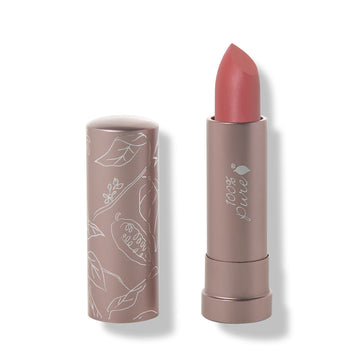Going gluten-free? Find out which ingredients to avoid, and great alternatives
Written by: 100% PURE®
Gluten has become a hot topic in health over the past decade, and with it, the relationship it has with our bodies. With research reporting over 18 million Americans having a gluten sensitivity, we’ve seen a surge in gluten-free options – not only in food but in skin care, as well.
In the spirit of Gluten-Free Day, we decided to give a quick breakdown of gluten-free beauty, and why it matters.
Despite the gluten-free craze being present for several years now, there are still some people who don’t understand what it means. So, for starters, what exactly is gluten?
Gluten is a protein found in many grains, particularly wheat. It’s known for binding molecules together. And while it’s a naturally occurring substance in grains, it can also be extracted and added into foods and personal care products to add protein, structure, and texture.
When humans consume food, it’s broken down by digestive enzymes like protease, which specifically breaks down protein. However, protease cannot completely digest gluten, so intact gluten proteins are sent to the small intestine. While most individuals have no problem processing these undigested gluten proteins, some might experience unpleasant symptoms, including autoimmune responses.
One major autoimmune issue is celiac disease, which causes damage to the small intestine. Consequently, a portion of Americans have opted to go gluten-free, and have found success with it. But does that mean you should go gluten-free?

With the rise of gluten-free options in food, there’s been a growing misconception that gluten is inherently bad. But for the majority of people, this is not necessarily true. For centuries, gluten has been a wonderful nutrient for humans that’s provided sustenance and protein, especially when found in whole grains.
But in the past century, the way we consume gluten has drastically changed. With the rise of processed foods, grains are often stripped down into foods with long shelf lives and very little nutritional content – think enriched white bread, snack cakes, and pasta. This is where some individuals start to get sick.
Consequently, individuals with a gluten intolerance may find that a gluten-free diet is better for their health. But this is not the case for everyone.
For instance, many individuals adopt a gluten-free diet with the notion that it will help with weight loss. They then sometimes turn to foods that, while gluten-free, are still processed. This can lead to spikes in sodium and blood sugar.
At the end of the day, it’s important to understand that a gluten-related disorder like celiac disease needs to be diagnosed by a doctor, and unnecessary gluten-free diets for those who don’t need them may lead to a new set of issues, like increased sugar intake and nutrient deficiencies.

For those who have been diagnosed with a gluten intolerance, a gluten-free diet can work wonders for their everyday life. But does the same go for personal care products?
In short, maybe. There is some research suggesting that gluten in topical products may be absorbed into the bloodstream through the skin, but this has been largely dismissed by experts.
However, there are many individuals who choose to avoid gluten in all products, even the ones that aren’t eaten, and there are a few reasons why. For instance, some patients with celiac disease may develop a variation of celiac known as dermatitis herpetiformis. This is usually characterized by an itching, blistering rash on the skin.
And while most evidence suggests that this is triggered by ingested gluten, there are some people who, understandably, don’t want to risk worsening their skin conditions with irritating products. In cases like these, they can experience more peace of mind when they use soothing, gluten-free skin care, like our Intensive Nourishing Balm or French Lavender Nourishing Body Cream.
Gluten can take the shape of many ingredients, which can sometimes make it tricky to spot. Sometimes, gluten-free products are labeled as such, but when in doubt, avoid the following ingredients in beauty products:
-
AMP-isostearoyl hydrolyzed wheat protein
-
hydrolyzed wheat protein (HWP)
-
hydrolyzed wheat gluten
-
triticum lipids
-
triticum vulgare
-
wheat bran extract
-
wheat germ extract
-
wheat germ glyceride
-
barley extract
-
hordeum vulgare extract
-
malt extract
-
sodium lauroyl oat amino acid
-
avena sativa extract
Those with celiac or gluten intolerance may particularly want to avoid gluten in products that touch their mouths since such products are especially at risk of oral ingestion. Gluten-free lipsticks, like our Cocoa Butter Matte Lipstick, are a safe option.
Additionally, some people with gluten intolerance might have more peace of mind when they use a gluten-free shampoo like our Kelp & Mint Volumizing Shampoo since we’ve all had that moment where we got some in our mouths while showering.
- Tags: Ingredients, January-2022, Skin Care
We carefully hand-select products based on strict purity standards, and only recommend products we feel meet this criteria. 100% PURE™ may earn a small commission for products purchased through affiliate links.
The information in this article is for educational use, and not intended to substitute professional medical advice, diagnosis, or treatment and should not be used as such.














